THE FORTRESS AZATIWATAS: KARATEPE-ASLANTAŞ
Prepared by Zeynep Hilal Seri
College of Social Sciences and Humanities, Koç University
December 2023

This exhibition was curated with the images selected from the Hatice Gonnet-Bağana Hittite Collection within the framework of the theme of “The Sun of Anatolia: The Hittites”, invites you to explore the rich history and cultural heritage of the Karatepe-Aslantaş archaeological site. Here, you will discover the traces of the Azatiwatas’ fortress dating back to the 8th century BCE, gain insights into daily life and religious rituals of the ancient era, and observe details of Anatolia’s past through reliefs, inscriptions, and sculptures. You can follow the footsteps of history, from battle scenes to feasts, and immerse yourself in the archaeological remnants of a bygone Anatolian life.
Karatepe-Aslantaş archaeological site is located within the boundaries of the Kadirli district of Osmaniye province in present-day Turkey, on the western shore of Aslantaş dam lake. This is a Neo-Hittite fortress covering an area of 196×376 square meters. The fortress is surrounded by a four-meter-wide defensive wall and fortified with 34 towers. Karatepe, in the late 8th century BCE, was built as a border fortress by Azatiwatas, who identified himself as the king of the Adana plain, to defend against aggressive tribes to the north during the Neo-Hittite period. The fortress was likely burned, destroyed, and abandoned, possibly in 680 BCE by the Assyrian King Esarhaddon, rendering it unusable. The name of the local kingdom mentioned in the inscriptions is a Luwian name, Azatiwatas, meaning “the beloved of the sun”.
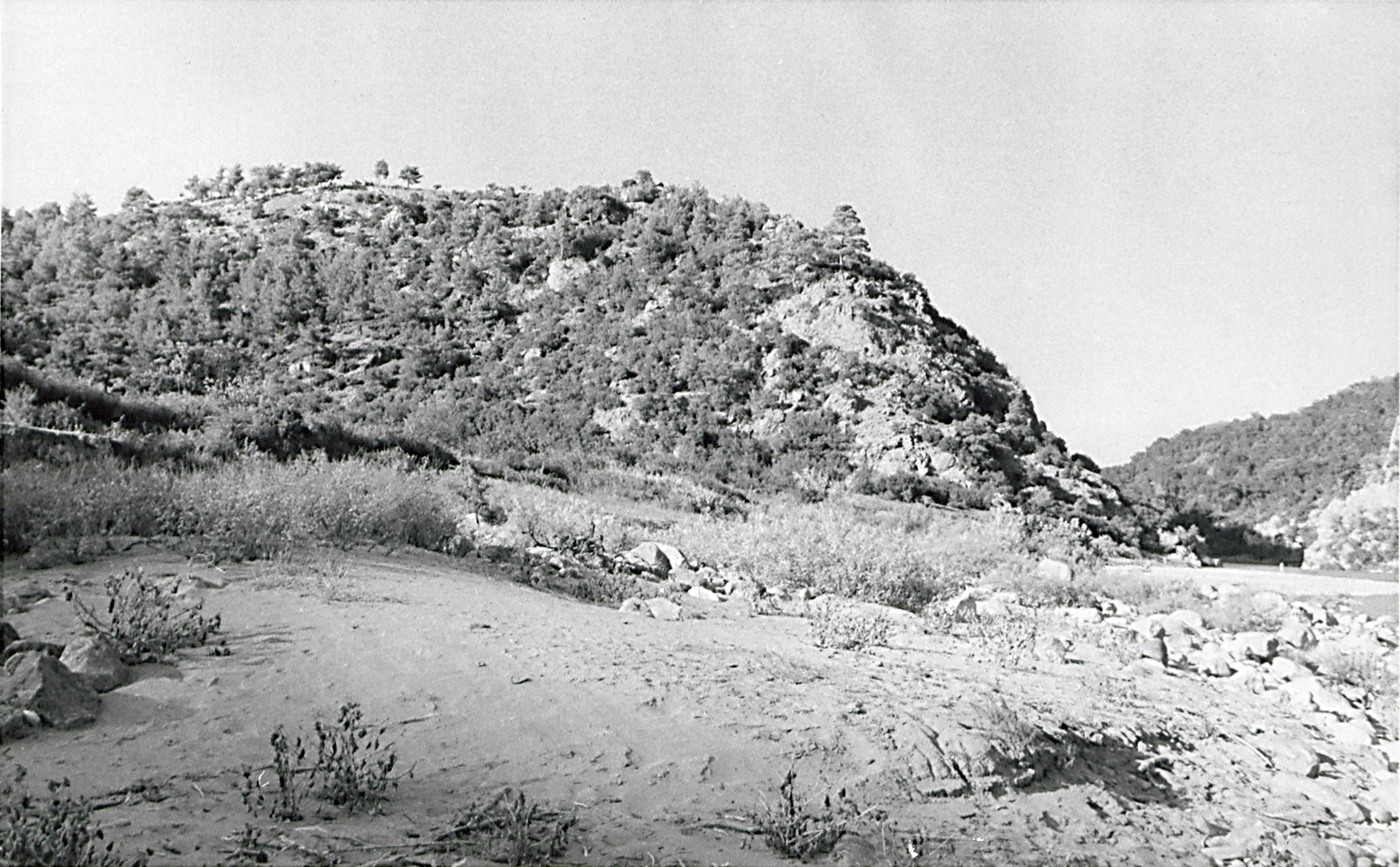
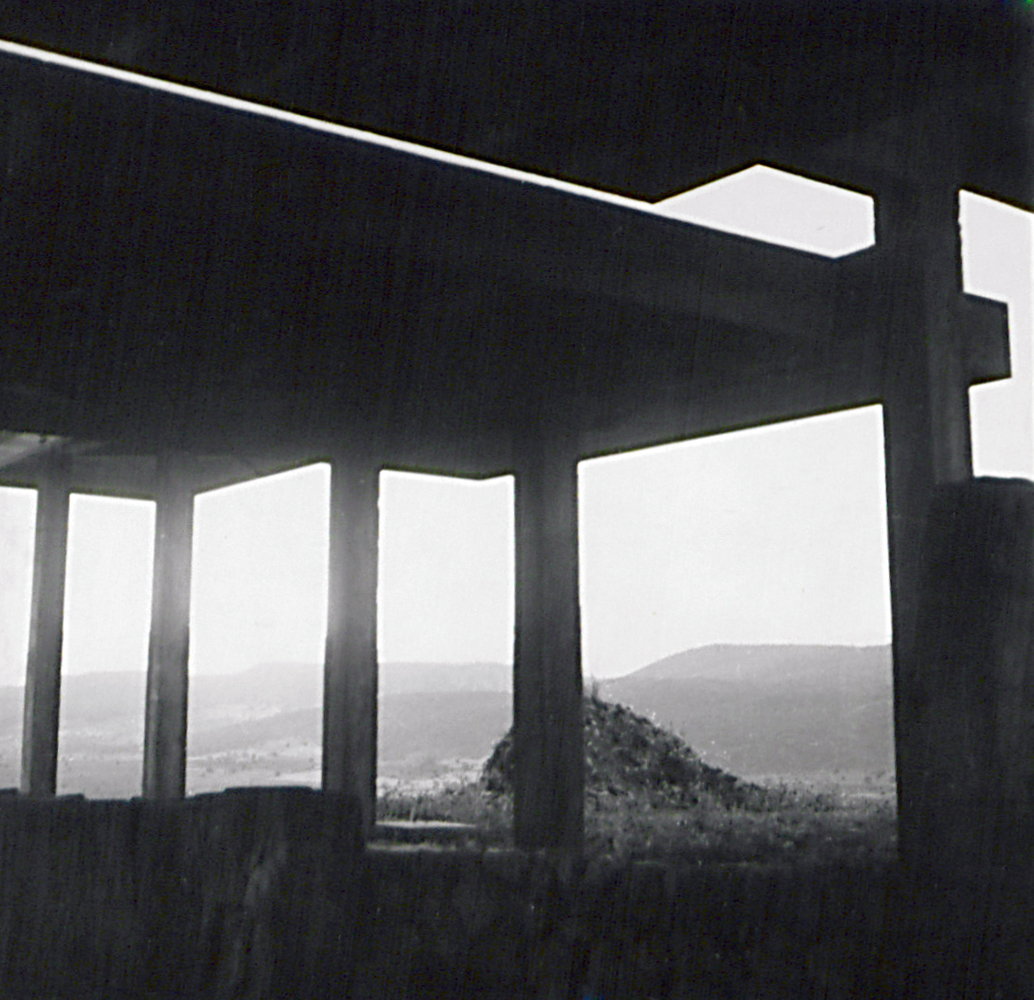
A photo showing the excavation area at Karatepe
GNT.S20.21.phg.19
After its discovery by H.T. Bossert and his assistant Halet Çambel in 1946, excavations were carried out at Karatepe-Aslantaş between 1947 and 1957. Later, in 1997-1998, the excavations expanded to include the exploration of a palace. The Karatepe-Aslantaş excavations initially began as purely archaeological work but over time, thanks to Halet Çambel, it evolved into a multidisciplinary project with long-term and diverse approaches. It was included in the UNESCO World Heritage Temporary List in 2020.
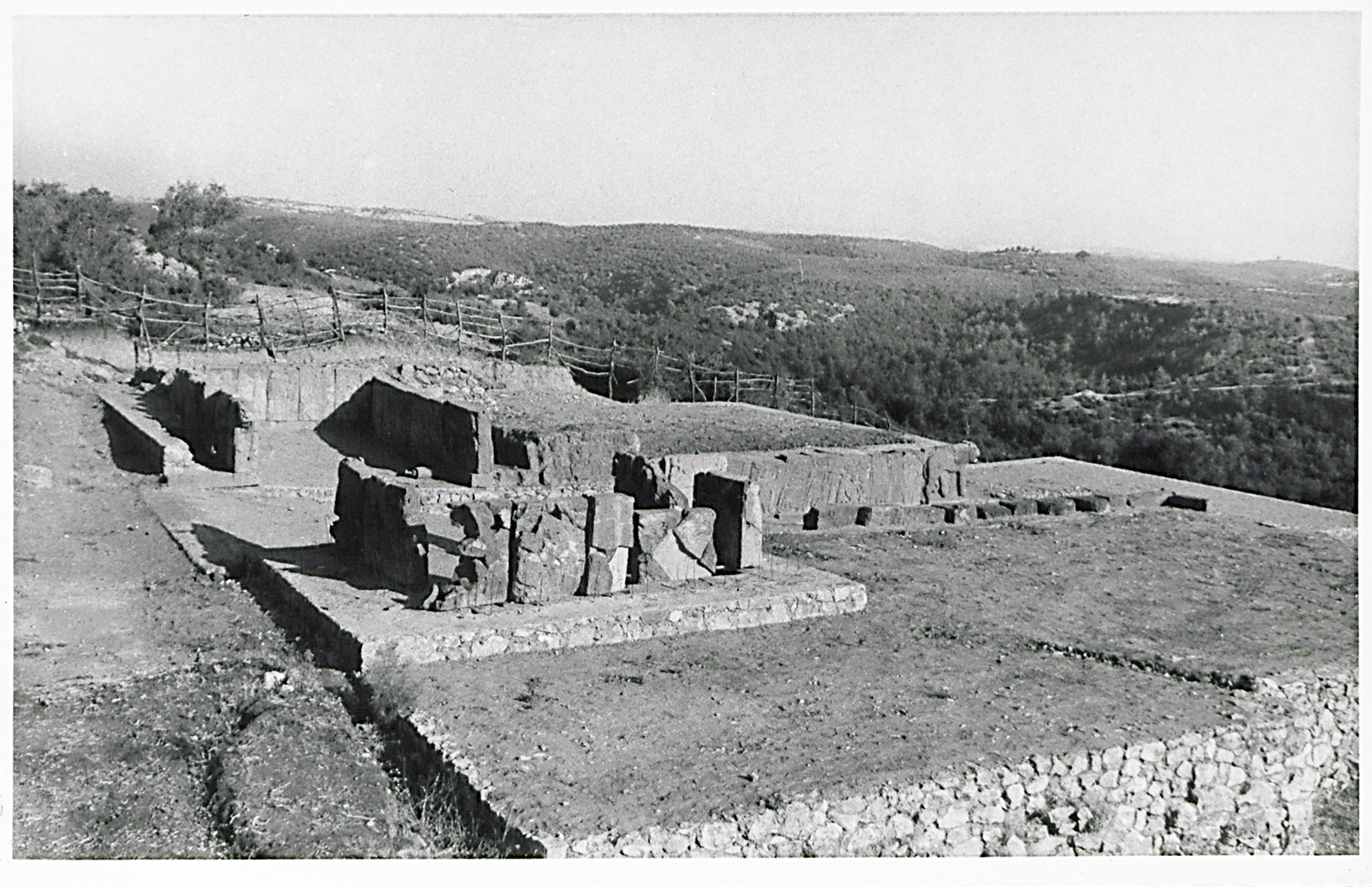
A View from the Neo-Hittite fortress of Karatepe
GNT.S20.06.phg.01
During the excavations of Karatepe Castle, three architectural layers have been identified. The first layer includes the walls, entrance gates, palace, and sacred structures. Reliefs and inscriptions are found on this layer. Regarding the second architectural layer, architectural remnants are more limited and are often associated with stone masonry under the foundational walls that constitute the main structure of the castle. Architectural remnants, reliefs, and inscriptions in the settlement of Karatepe Castle are generally found on the first layer, which is considered the most recent. and even earlier layer 3 identified as Late Bronze. The third layer is dated to the Late Bronze Age.
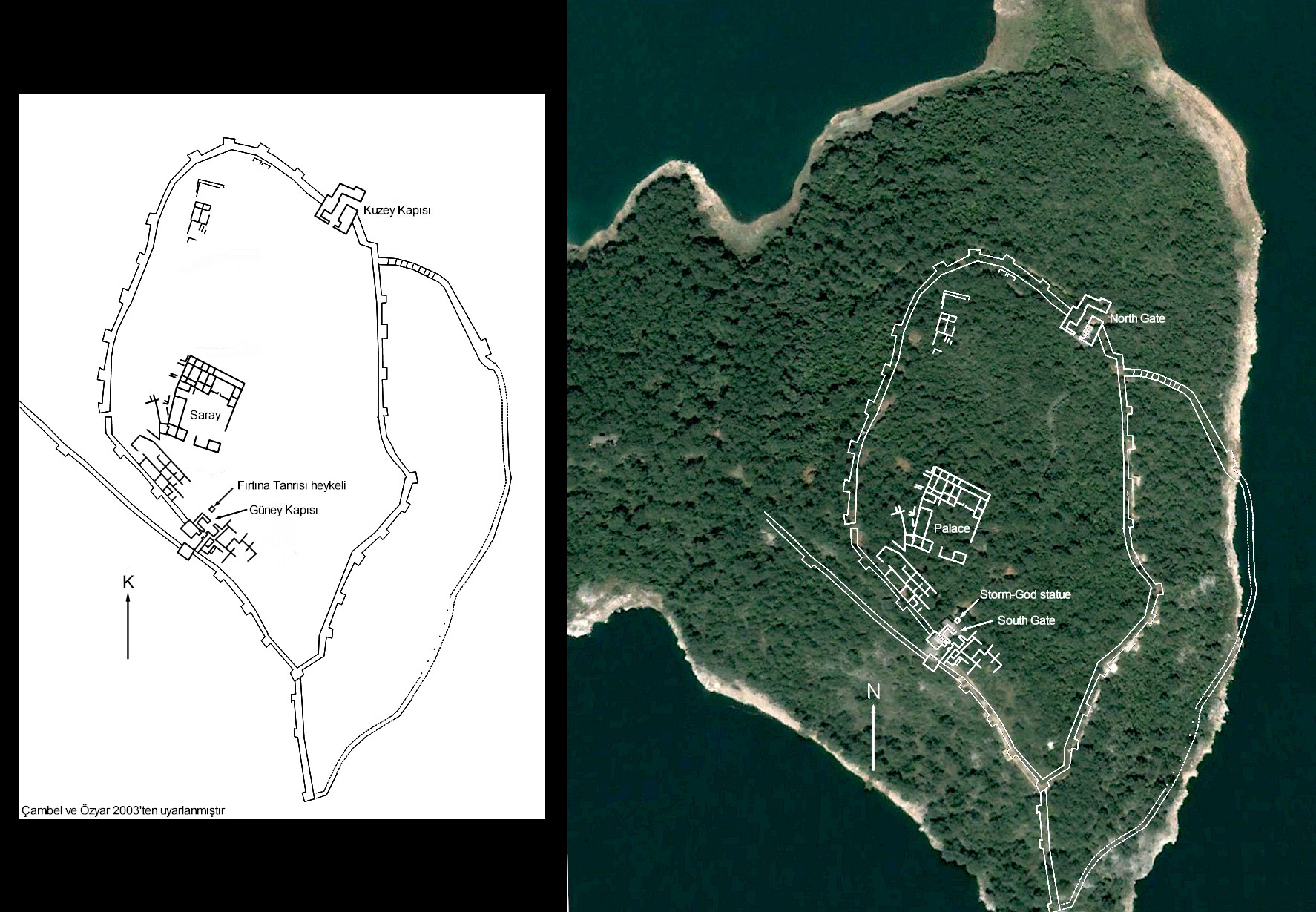
Karatepe-Aslantaş, the ancient Azitawataya fortress, is adorned with richly decorated gates featuring reliefs of Luwian hieroglyphs and the Phoenician language. Thanks to the Phoenician (cuneiform) inscriptions found here, a key similar to the Rosetta Stone has been discovered, providing the most recent significant contribution to the decipherment of Luwian hieroglyphs, which had previously remained completely unsolved. This bilingual inscription found at Karatepe has become a milestone for decoding Luwian hieroglyphs found in the southern regions of Anatolia.
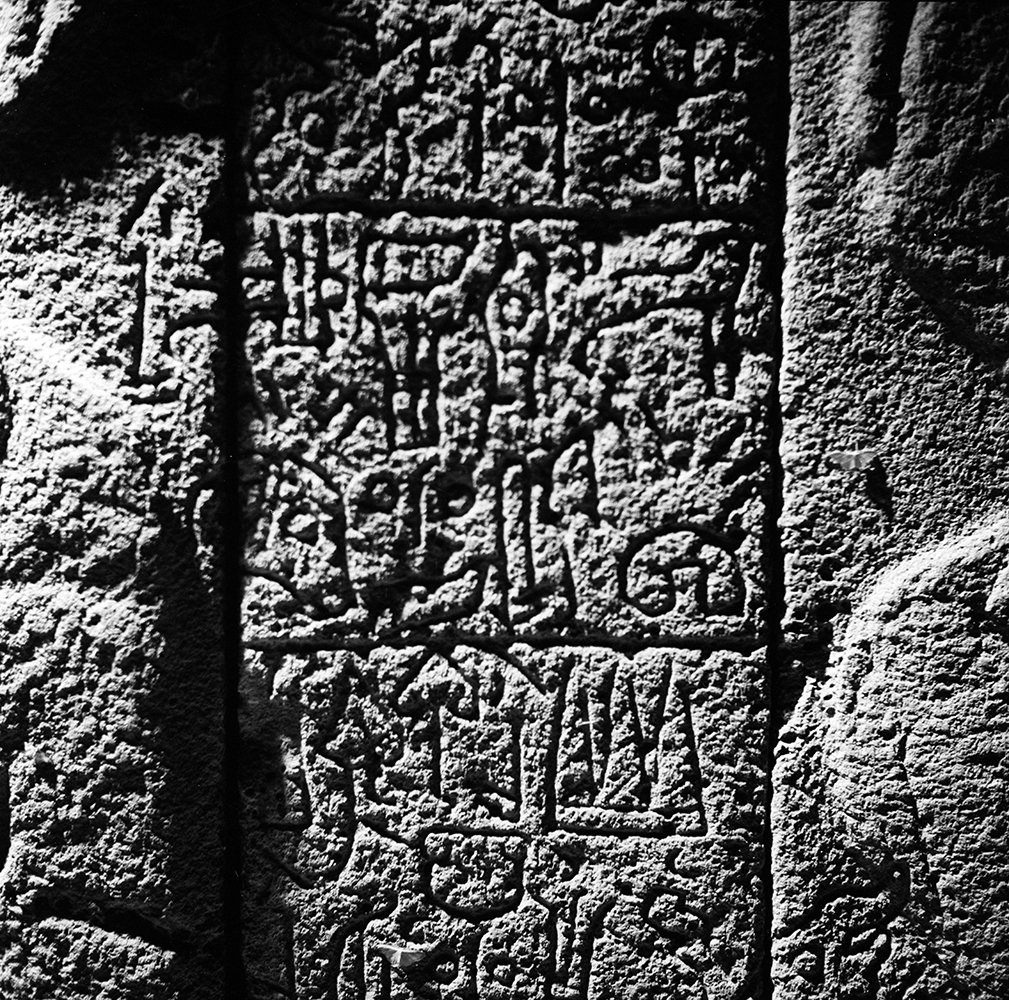
The Luwian hieroglyphic inscription at the Neo-Hittite fortress of Karatepe
GNT.S20.03.ngv.05
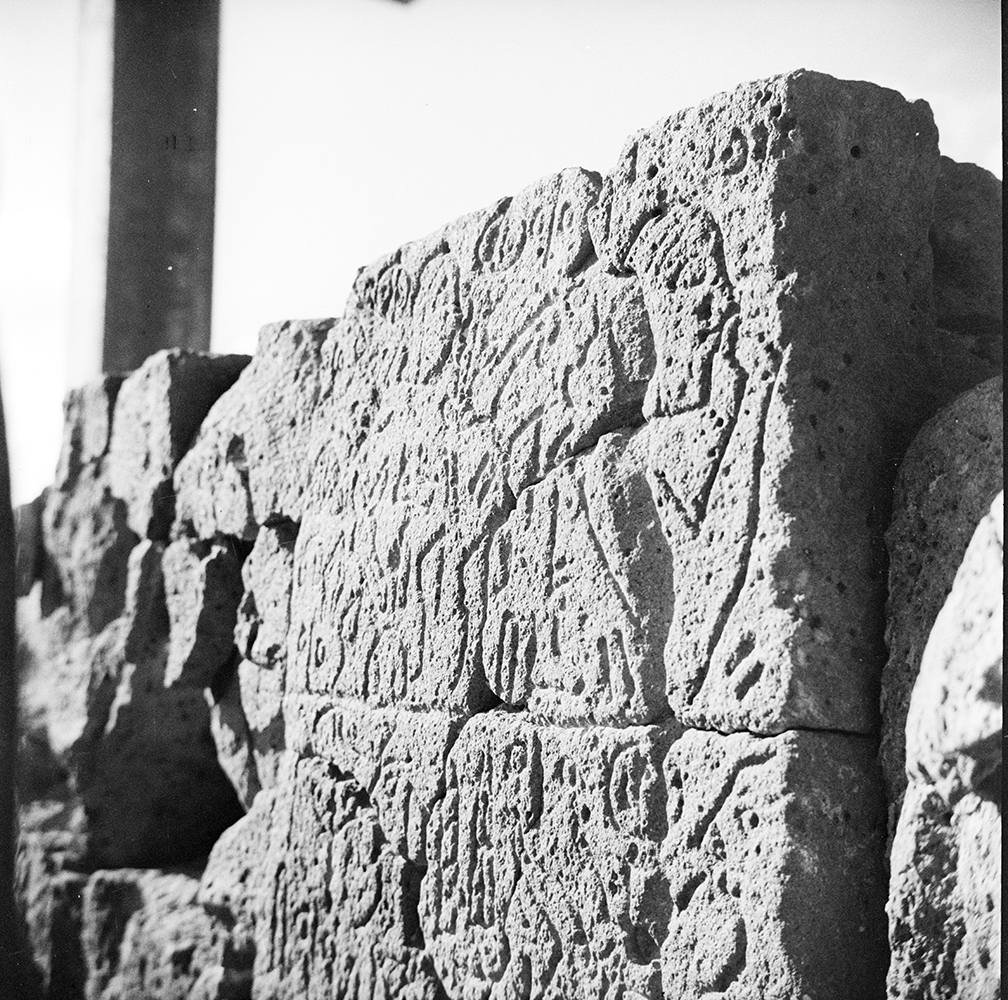
The Luwian hieroglyphic inscription at the Neo-Hittite fortress of Karatepe
GNT.S20.02.ngv.04
Karatepe Reliefs
The reliefs at Karatepe include individual human figures, two individuals, people following one another, humans with animals, heraldic groups, and realistic scenes depicting everyday life, such as feasts, music, hunting, sacrifices, boat rides, and more.
The gates of Azatiwatas’ Castle have the bodies of lions and sphinxes carved as bas-reliefs at the entrance gateways. It is often observed that these lions and sphinxes are seated on flat pedestals, which are sometimes covered with inscriptions.
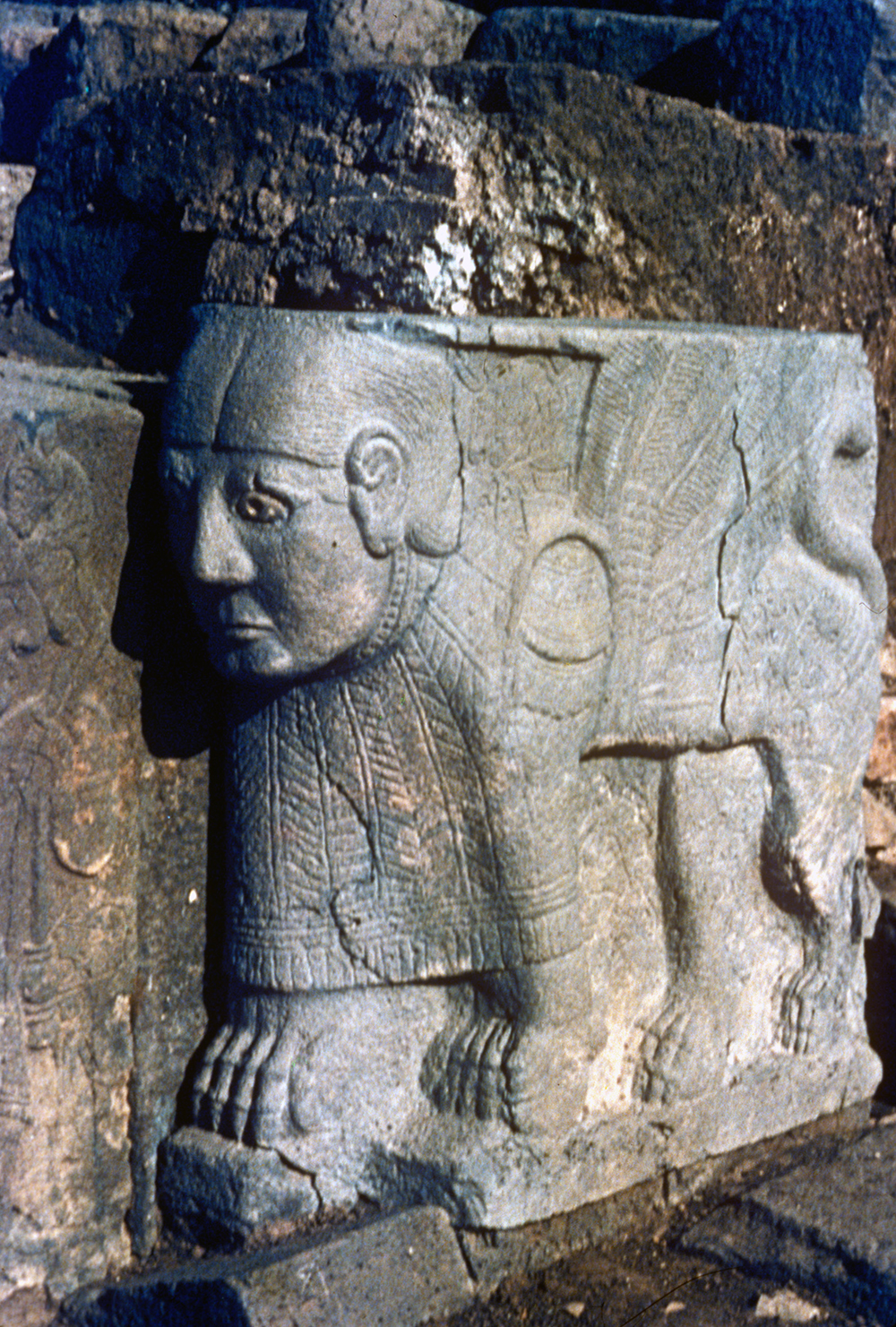
Karatepe: Northern gate, sphinx sculpture
GNT.17.07.sld.16
The scene depicted at the South Gate of Karatepe, where King Azatiwatas and the Queen are sitting at a feast with musicians playing lyres and other stringed instruments, sheds light on the daily life of that era and Hittite royal rituals.
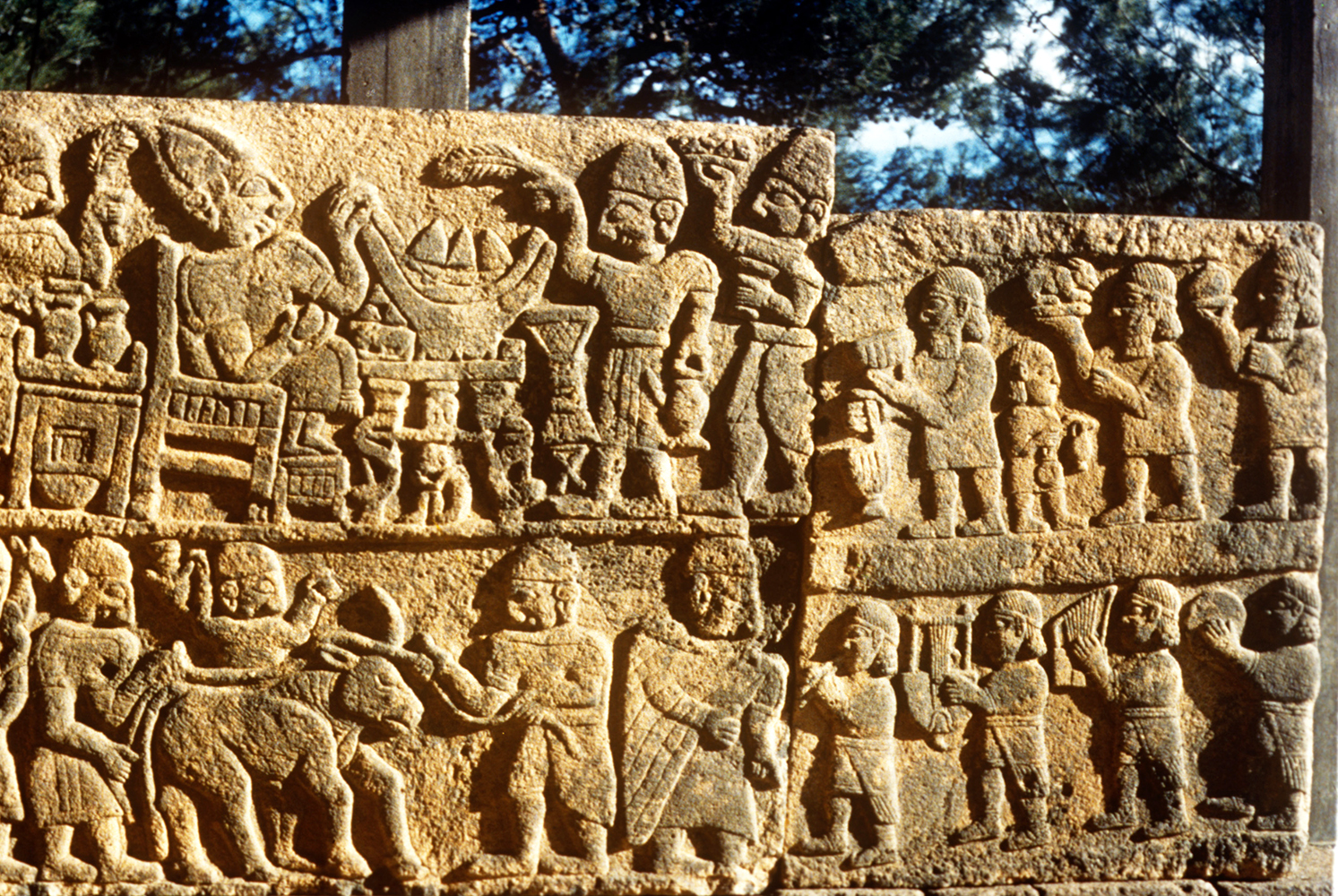
Karatepe. Southwest gate. The relief shows two orthostates: the scene of King Azatiwatas’ feast/banquet and the scene of table keepers and musicians.
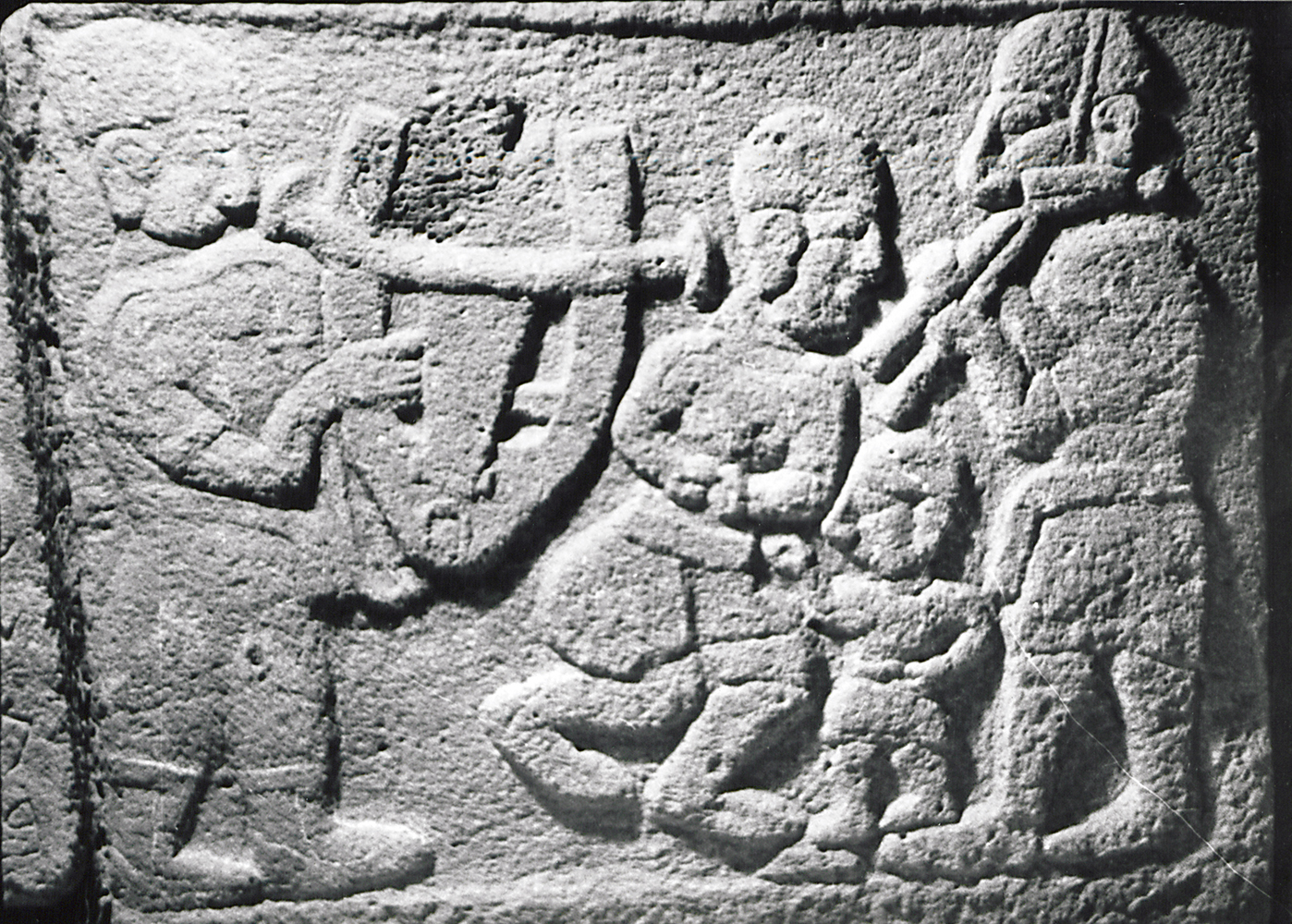
In addition to scenes taken from daily life, the Karatepe reliefs provide clues about religious and mythological aspects of life. Particularly when inscriptions and reliefs are correlated, it becomes possible to gain a better understanding of religious practices.
In the lower part of the feast scene, it is observed that a bull and a sheep are being sacrificed. The inscriptions mention orders to sacrifice an ox in honor of the storm god Tarhunza/Baal Krntryš once a year. Additionally, there are orders to sacrifice a sheep during harvest time and another sheep during grape harvest time.
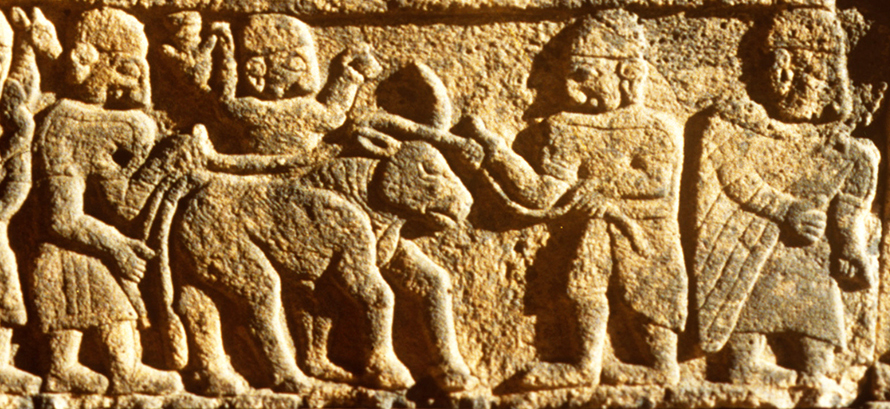
Karatepe, Southwest Gate. Bas-relief with two orthostatates: King Azatiwatas’ banquet.
Inside the castle, right behind the eastern gate, there is a monumental statue of the Storm God. The Storm God Tarhunza/Baal is, in general, a god associated with both war and prosperity. Additionally, the Storm God at Karatepe is linked to characteristics related to fertility, longevity, health, abundance, wealth, victory, success, hunting, grain, and wine.
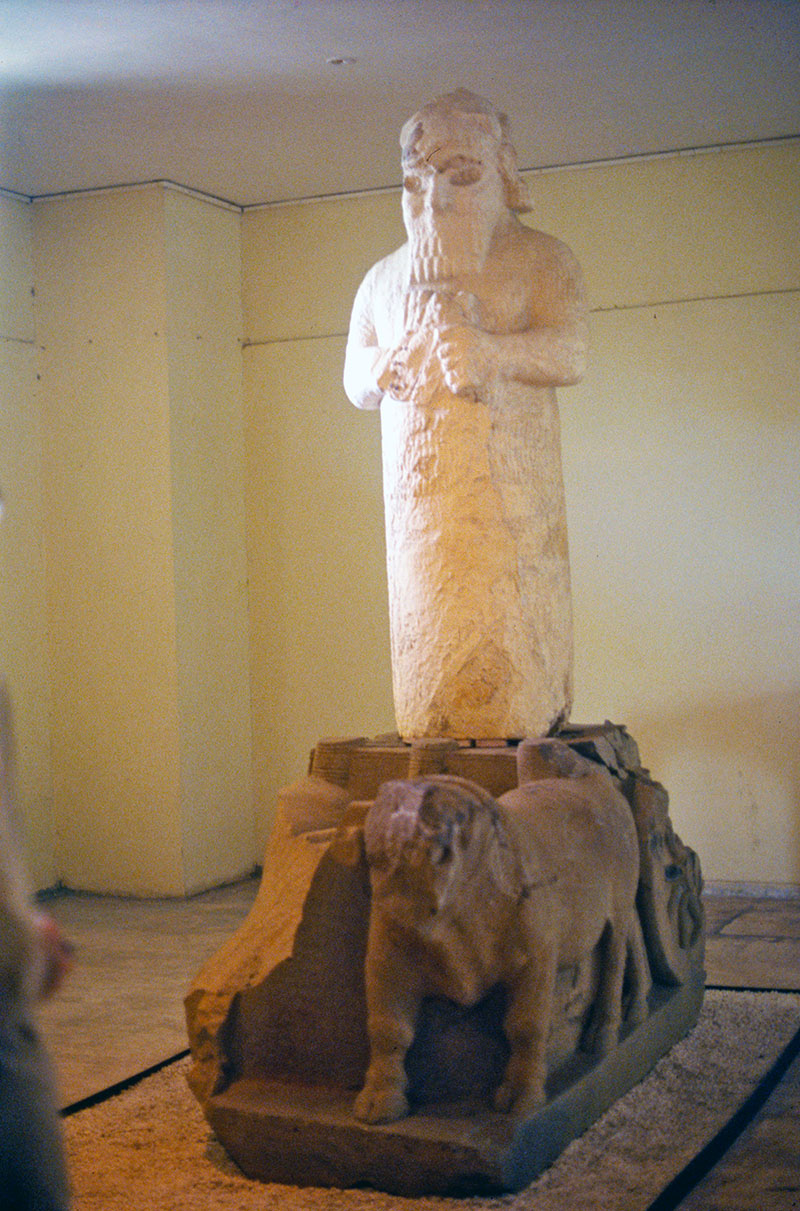
Among the reliefs, scenes of warriors in combat, hunters on land and in water, as well as scenes of music and games, are found interspersed and unrelated to each other, often situated alongside inscribed orthostats.
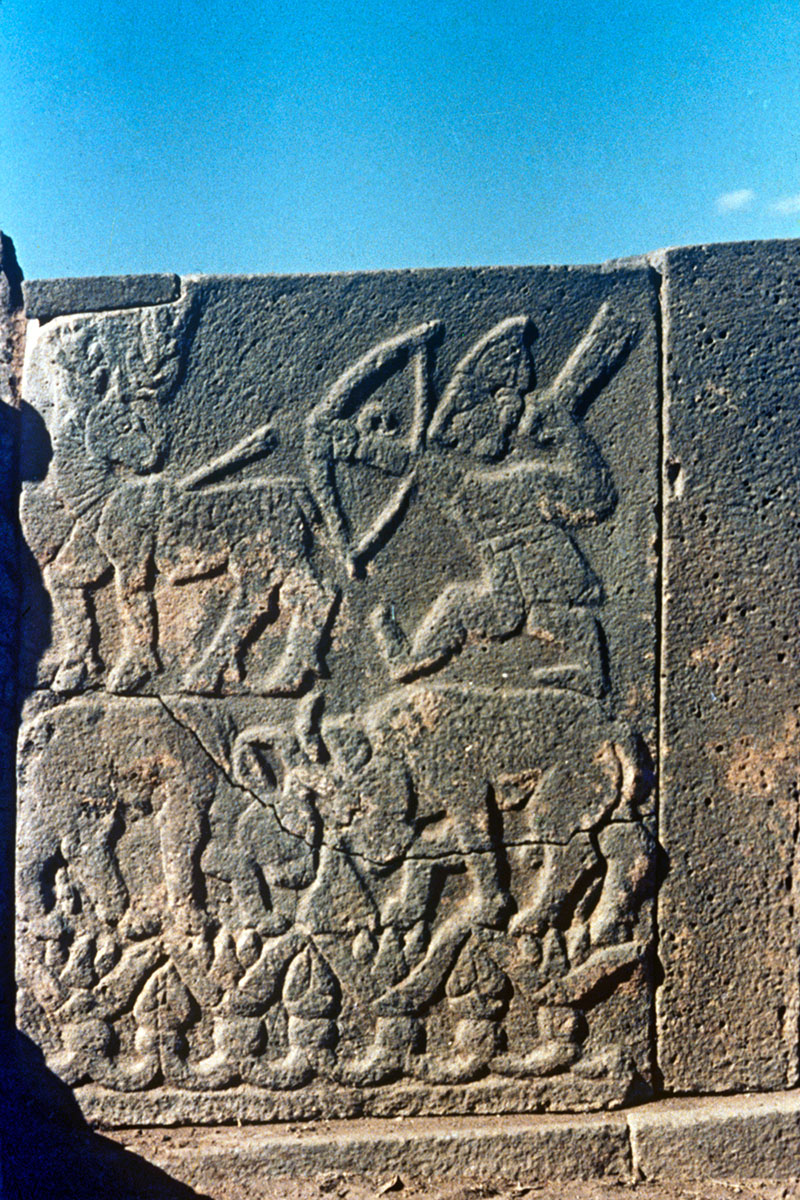
Karatepe, North Gate, relief orthostat: Deer hunting with arrows, facing bulls, plant frieze
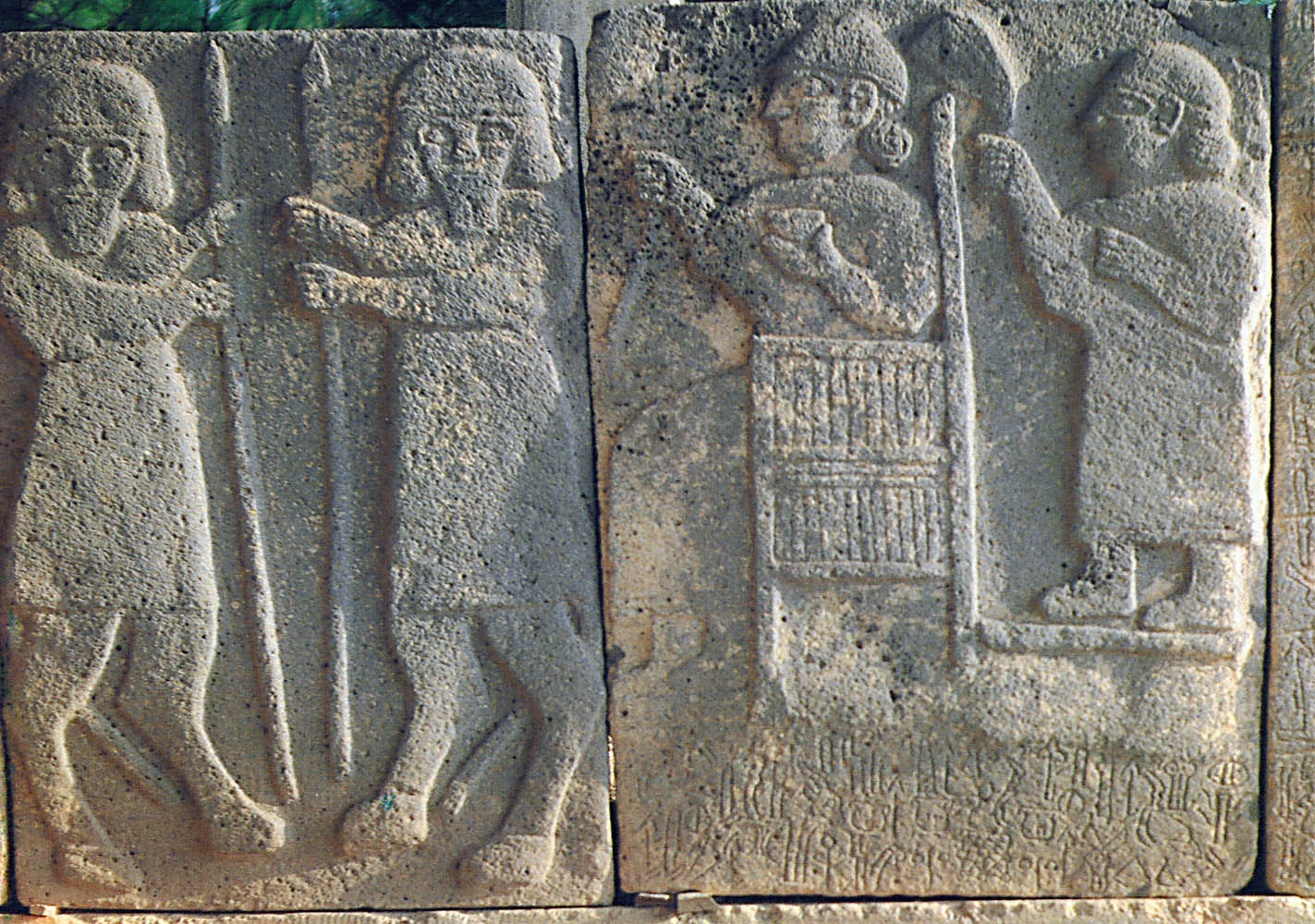
Karatepe. Southwest gate – right wall. relief orthostat
Karatepe stands as the custodian of a significant legacy from the depths of Neo-Hittite history. The meticulous excavations at Karatepe have unearthed written documents that guide us in deciphering the Hittite language, while the stone reliefs and other artworks reflect the aesthetic and cultural richness of that era. The potent royal palace, wise leaders, rich culture, and sophisticated art of the Neo-Hittite Empire come to life again with each gaze upon the monuments of Karatepe; offering us an opportunity to comprehend the daily life, beliefs, and history of that period. It is crucial to remember that the Hittite civilization is just one of the rich mosaics of Anatolia, and this exhibition serves as a call to embrace, understand, and pass on the legacy that history has presented to us.
REFERENCES
Çambel, H. (1948). Karatepe: An Archeological Introduction to a Recently Discovered Hittite Site in Southern Anatolia. Oriens, 1(2), 147-162. https://doi.org/10.2307/1578993
Çambel, H. (2010). Karatepe-Aslantaş Açık Hava Müzesi Çok Yönlü Bir Proje. TÜBA-KED Türkiye Bilimler Akademisi Kültür Envanteri Dergisi, (8), 131-136 . https://dergipark.org.tr/tr/pub/tubaked/issue/57432/814187
Çambel, H. (1949). Karatepe Heykeltıraşlık Eserleri Hakkında Bazı Mülahazalar. Belleten https://dergipark.org.tr/en/download/article-file/3360318
Darga, A. M. (1992). Hitit Sanatı. Türkiye: Akbank.
Mazzoni, S. (2008). Book Review: Karatepe-Aslantaş: Azatiwataya. Die Bildwerke
By Halet Çambel and Aslı Özyar. AJA October 2008 (112.4). https://www.ajaonline.org/book-review/580
Karatepe-Aslantaş Archaeological Site. https://whc.unesco.org/en/tentativelists/6470/
Winter, I. J. (1979). On the Problems of Karatepe: The Reliefs and Their Context. Anatolian Studies, Vol. 29 (1979), 115-151.

